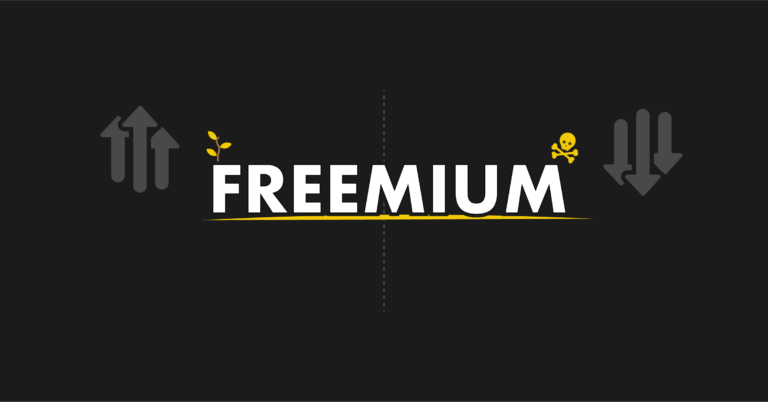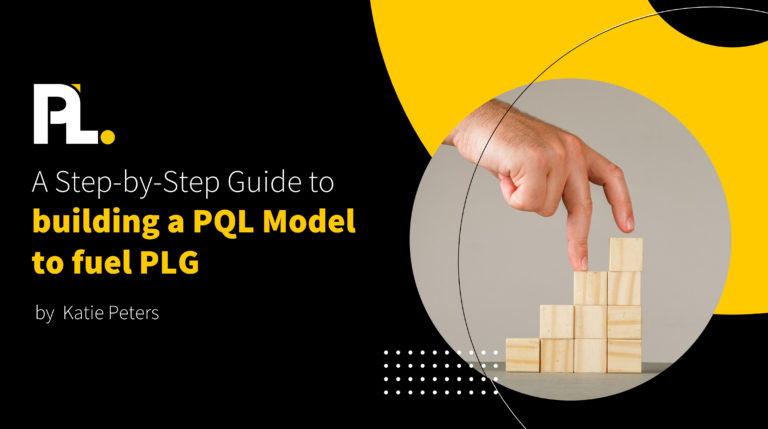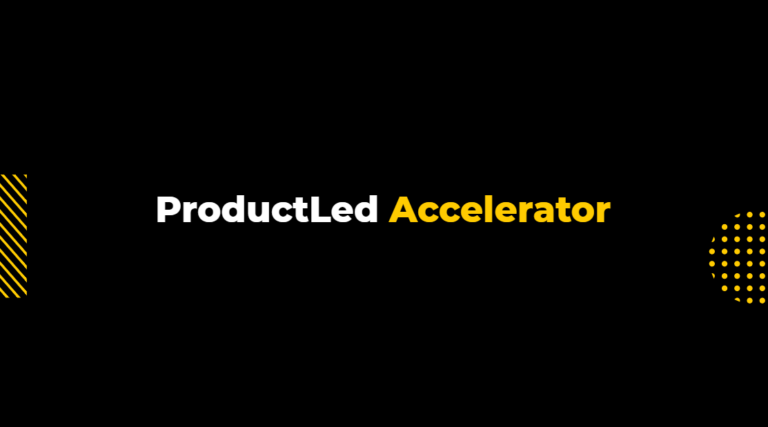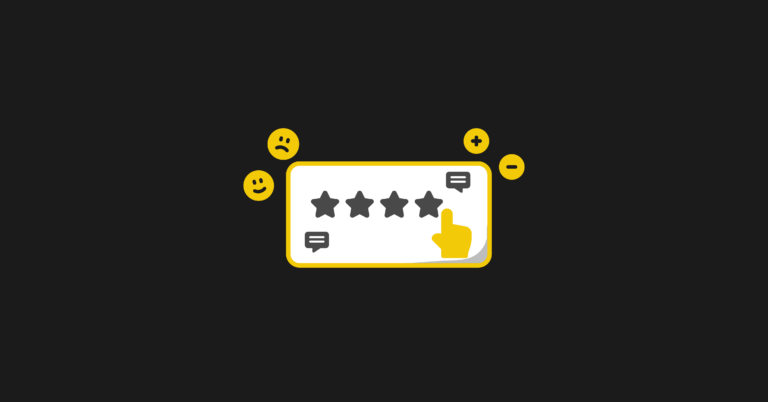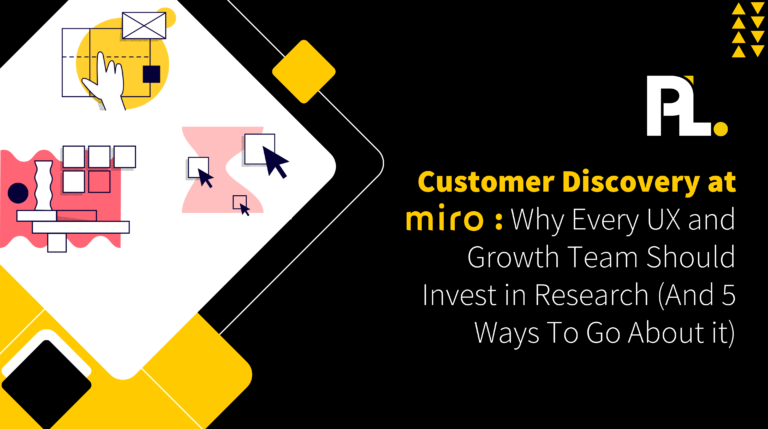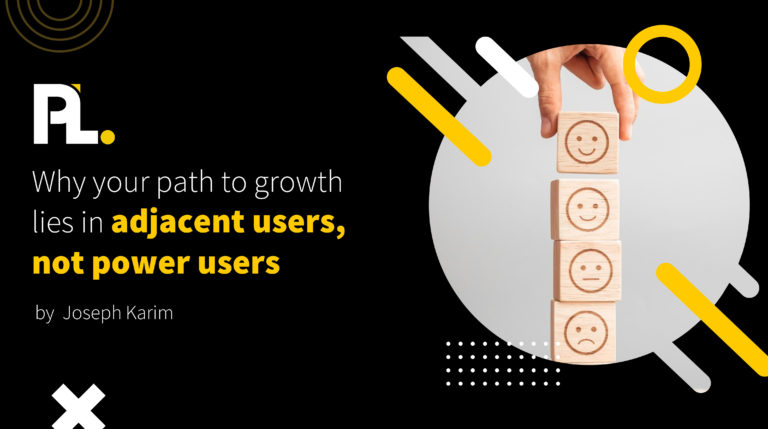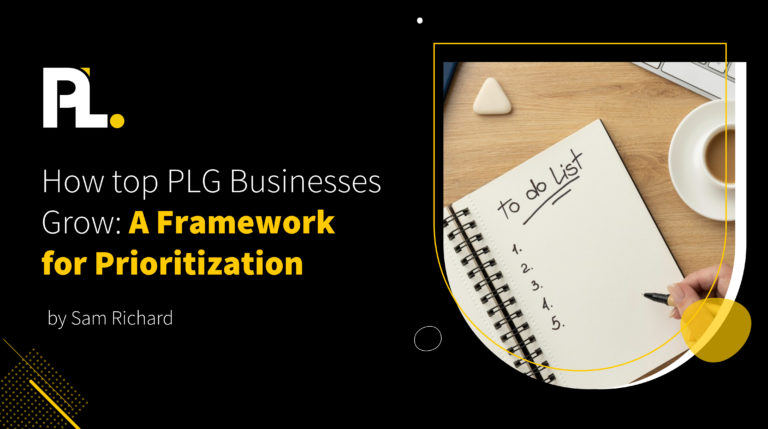This article is based on one core component that's revealed in The Product-Led Playbook. Packed with case studies and templates, it's the go-to manual you need to build a successful product-led business.
A strategy is not a plan; it’s a theory of how you’re going to win.
For instance, Southwest Airlines’ winning aspiration was to become the more convenient substitute for Greyhound.
They had a theory they could win a substantial part of the market by offering the lowest-cost tickets while also maintaining the lowest costs to run their airline business.
To do that, they made key strategic choices to make it a reality:
- Fly point-to-point routes so the aircraft can be utilized more than the typical hub-and-spoke model.
- Not offer meals on flights because we specialize in short flights.
- Only fly Boeing 737s, so their gates, training, and maintenance costs were simple and saved costs.
- Prioritize online ticket sales vs booking through travel agents to increase their margin.
Because of this business strategy, Southwest Airlines was able to get bigger. Now, it flies the most passenger seat miles in America.
At the core of building a winning business strategy is the simple reality that you must choose to do some things and not others.
Southwest Airlines wouldn’t have been able to make their theory a reality if they did what other airlines were doing. They had to say no to long-distance flights. They had to say no to partnering with travel agents. They had to say no to flying different aircraft.
A winning business strategy makes it easier for your team to say no to initiatives and projects that don’t align with your theory of how you’re going to win.
Yet, it’s not easy.
When a strong bias for action is present in a company, it’s easy to fall into the “action trap” of just trying to do everything and not being intentional about what things you’re not going to pursue as a business.
A good strategy helps the entire company know what is and isn’t important to do. This creates an unstoppable focus that intentionally directs everyone’s energy.
A company with a bad or unclear business strategy will waste countless resources and energy.
This concept is well described in Essentialism, where author and business strategist Greg McKeown smartly points out that if we have 10 units of energy, we could broadcast it out in 10 different directions and ultimately make one inch of progress in those 10 directions. Or we could put all that energy into one direction and make 10 inches of progress in one direction.
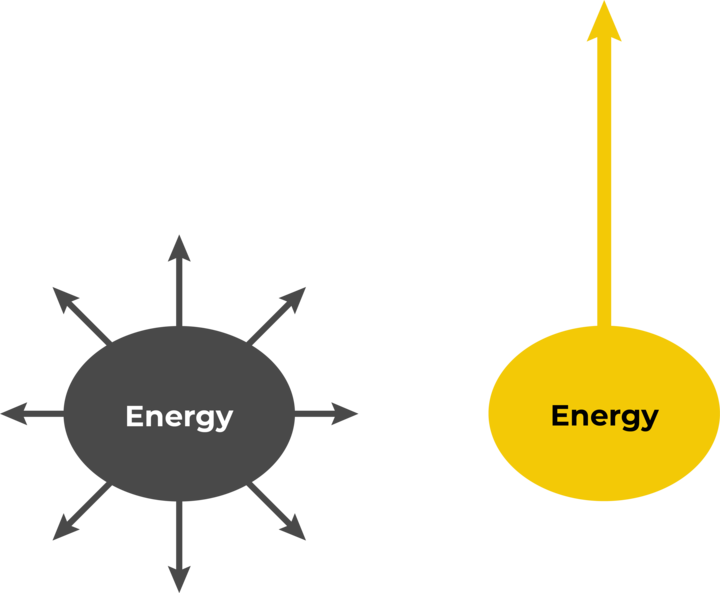
A great strategy helps unite your team and make massive progress in one direction by giving everyone a decision-making framework for what the company’s focus is.
Now, I know what some of you reading this are already thinking…
We already have a strategy.
Can I just skip to the next component?
Short answer: no.
Not because I said so, but because by going through this section and applying it to your business, you’re going to gain so much clarity. When you build a well-crafted business strategy, decision-making becomes so much easier.
Your entire team can make decisions faster.
Your customers understand what you do better.
Your business becomes harder to copy.
All of this is possible with a good strategy.
As you go through this section, please take the time to craft your winning business strategy. This is one of the highest-leverage activities you can do as a founder or CEO.
I would know, but not for the reasons you might think.
For the first five years of running ProductLed, I didn’t have a great strategy.
Our target market was vague.
We didn’t have a distinct advantage to winning.
We weren’t building a moat.
My bias for action was running the day-to-day.
We got a lot done, but most things we launched didn’t have a big impact.
Until we started to build a strategy.
At this point, we started being more intentional about where we directed our energy as a company. We said no to exciting opportunities so that we could pursue opportunities that aligned with our strengths.
It wasn’t immediate, but over time we started to streamline the business, and growth picked up. All because we started making massive progress in one direction and not spreading ourselves thin in so many different directions.
Your strategy has the ability to compound the efforts of everyone in your organization.
Yet, building your strategy doesn’t have to be overly complicated.
You can build a winning strategy by answering these four questions:
- Where will we play?
- How will we win?
- What capabilities must we have?
- What strategic choices must we make?
Combined, these four questions form the basis of your high-level strategy.
What I love about these four questions is that you’ll unlock clarity quickly.
Let’s dig in!
1. Where will we play?
Where you play is as much an art as it is a science.
I wish I could say it’s as simple as picking a target market and a marketing channel, and then you’re off to the races.
But, if I’m being honest, no matter how you approach it, there will be much trial and error until you hone in on the areas where you play best.
To answer where you will play, you must answer five questions:
- Who’s your ideal customer?
- What problem do you solve?
- What’s your core product?
- What are your primary marketing channels?
- What geography are you going to target?
Here’s an example of our old where-to-play strategy at ProductLed:
- Customer: Anyone leading the PLG initiative at their company.
- Problem: Learning about product-led growth.
- Product: ProductLed Accelerator.
- Channels: Organic search.
- Geography: Global.
After completing this activity, we simplified our where-to-play strategy to:
- Customer: 7-figure product-led founders
- Problem: Scaling a product-led business past 7-figures and beyond
- Product: ProductLed Academy - a coaching program for founders implementing the ProductLed System™️
- Channel: Acquire users through low-cost channels that compound in growth (YouTube & Organic)
- Geography: North America first, Europe second
Now, you might think our first strategy was rather undirected compared to the second one, and that’s the point.
As you go through this activity, I encourage you to list your current where-to-play strategy and compare it to your new one.
I hope you come to the same conclusion we did.
When you’re not intentional about where you play, it’s too easy to spread yourself too thin.
Which then makes it hard for you to win.
It’s the equivalent of one army trying to fight multiple battles at once.
It will always get destroyed by an army focused on one beachhead and directing all its energy and efforts to one key area.
If you’re unclear on what marketing channels to pursue as a business, I highly recommend reading Traction: How Any Startup Can Achieve Explosive Growth. This book is one of the best at outlining what marketing channels make the most sense for your business.
Action items:
- List out your current where-to-play strategy.
- Craft your future where-to-play strategy.
Note the differences between the two – if it feels more focused, you’re on the right track.
Once you know where to play as a business, creating a game plan to win is next.
2. How will we win?
Before we dig into how you can win as a business, let’s zoom out and go through the main ways businesses win. Although there are countless ways your business can win in any market, I focused on 14 moats that make what you do as a business hard to copy and provide a long-term competitive advantage.
Reviewing this list, consider which moat would help your business win.
- Differentiation Moat: Set your business apart from competitors by offering a unique product or service that fulfills customer needs in a distinctive and valuable way. This could involve innovative features, superior quality, exceptional customer service, or a combination of factors that make your offering stand out.
- Cost Leadership Moat: Become the low-cost provider in your industry while maintaining acceptable quality standards. Achieve cost advantages through economies of scale and efficient operations, which can create barriers for competitors. This advantage allows a company to offer products or services at a lower cost, making it challenging for others to compete.
- User & Customer Experience Moat: Create a seamless and intuitive user experience (UX) that can differentiate your solution from competitors. But extending that same level of thought and care throughout the customer’s journey creates an outstanding customer experience. Understanding your customer’s needs and preferences allows you to design seamless and personalized interactions, provide convenience and exceptional service, and build long-term loyalty.
- Network Effects Moat: Network effects occur when the value of a product or service increases as more people use it. Examples include social media platforms like Meta, where the more users there are, the more valuable the platform becomes for each user. You can always see network effects at companies like Webflow, WordPress, Miro, and Canva. They have an army of users who create templates for other users. As the platforms grow, the platform becomes more valuable over time and is hard to copy.
- Operational Efficiency Moat: Streamline your internal processes and optimize resource allocation to improve productivity and reduce costs. Efficient operations can lead to better profitability, faster delivery times, and improved customer satisfaction, giving you a competitive advantage.
- Branding and Reputation Moat: Build a strong brand that resonates with your target audience. Cultivate a positive reputation by consistently delivering on your promises, providing exceptional products or services, and actively engaging with your customers. A reputable brand can command customer loyalty, trust, and premium pricing.
- Distribution Moat: An extensive distribution network or exclusive access to key channels, strategic partnerships, and alliances can create barriers for competitors. It allows businesses to reach customers more effectively and control the availability of their products or services. Collaborating with strategic partners, suppliers, or complementary businesses can strengthen a company's position. Partnerships can provide access to new markets, distribution channels, technologies, or resources that would be challenging to obtain independently. Another great example of having a distribution moat is when your app is one of the first on the Shopify or iTunes app stores. You get the lion's share of the downloads because it’s a new platform, and over time, your app gains the most reviews and attention that is hard to replicate. We also benefitted from this in the early days of PLG. We were the pioneers in PLG and wrote a lot of great content on PLG before people were talking about it. Over time, we gained a ton of backlinks and authority around the topic, generating a lot of traffic that is hard for new entrants to copy.
- Speed and Innovation Moat: Being fast at innovation is one of the most underrated moats. It’s not the big that eat the small… It’s the fast that eats the slow. You can stand out quickly if you break into a stagnant industry with speed and innovation.
- Pricing Moat: A unique approach to monetization that aligns with your customer’s success could be a powerful way for your business to win. For instance, giving away your product for free but subsidizing your costs through sponsorships. Or only getting paid when your users get value by charging a percentage of each transaction. Whether it’s usage-based pricing or some other form that aligns with how customers gain value from your product. This can be hard to copy if paired with a customer success moat.
- Free Moat: Just having a free product experience for your users is a start in this direction, but you can take this even further by creating more free products that are subsidized by your core product(s). This can allow you to expand into adjacent markets and disrupt them by promoting your product for free to capture more potential users and demand for your other products. For example, ConvertKit, an email marketing tool, created a free landing page tool to make it easier for creators to capture signups. This allowed them to expand into an adjacent market and offer a disruptive free product.
- Switching Cost Moat: If a business can create high switching costs for customers, it becomes more challenging for them to switch to a competitor's product or service. This could be achieved through contractual obligations, integration with other systems, or data lock-in. Designing your software in a way that creates switching costs for customers, such as data migration or integration efforts, can reduce the likelihood of churn and make it harder for users to switch to competing solutions.
- Proprietary Process or IP Moat: Patents, trademarks, copyrights, and trade secrets can protect a company's intellectual property and provide a competitive advantage by preventing others from replicating or using proprietary technologies or brands. For instance, we developed The ProductLed System™️ as our proprietary process to help software founders scale their self-serve revenue faster.
- Community and User Engagement Moat: Building a vibrant brand community and fostering active user engagement can create a loyal customer base and generate word-of-mouth marketing. Businesses that create a sense of belonging, encourage user-generated content and facilitate community interaction can develop a strong moat.
- Expansion Moat: "The business that can spend the most to acquire a customer wins.” - Peter Thiel. The main way to ensure you can spend the most to acquire a customer is by making the most per customer in your industry. This could be because each customer you have eventually buys more than one product from you, or you have a revenue model and high customer loyalty that grows your customer’s lifetime value over time. HubSpot is a great example of winning with expansion. You can start with their free CRM and sales tools if you’re getting your first few customers. Then, when you have a good amount of contacts, you can start paying for their Marketing hub, and then when you have a Sales team, you can upgrade to their Sales hub. And then, when you have too many customers to deal with, you can upgrade to their Service hub. One small $50/month customer can eventually turn into one big $5,000/month customer over time.
It’s important to note that you can and should build more than one of these moats over time. Each creates a barrier to entry, making it harder for competitors to copy what you do.
And most importantly…
Creates a competitive advantage for you to win as a business.
Yet, you don’t want to focus on building too many moats simultaneously.
I recommend starting with building one moat at a time, and once you’ve built it up, consider adding another.
One important thing to point out here is that a moat is something you regularly need to maintain. It’s not something you set and forget. For instance, if you have a differentiation moat with a couple of unique features but a competitor copies them, it’s only a matter of time before your differentiation moat shrinks as customers see fewer differences between your offering and the competition.
Let me share four common scenarios to give you an idea of how you can craft your “how to win” strategy.
We will be the low-cost leader in our market
Back to our Southwest Airlines example, they decided how they would win through a Cost Leadership and Operational Efficiency moat. These two moats complement each other perfectly as they reinforce each other when lowering costs while making a profit because of your efficient operations.
We’re going upmarket
Consider making Differentiation, Customer Experience, and High Switching Costs your strengths. With these three, you’ll be able to serve enterprise customers better with your unique, differentiated solution and keep them as customers for a long time with an exceptional customer experience and high switching costs.
We want to become the dominant market leader
Consider building moats around Cost Leadership, Operational Efficiency, and User Experience. Each of these three moats reinforces each other. Because you have a great user experience, it drives operational efficiency (i.e. less support tickets and demos) and enables you to sell your product at a lower price while keeping healthy margins. To keep the dominant market leadership position, your product must be the best for the best price. These three moats help you accomplish that.
We will disrupt a stagnant industry
Consider winning with a Free moat, Speed, and Cost Leadership. These three moats create a vacuum for unsatisfied customers typically over-served by the current enterprise solutions. Hello, Canva versus Photoshop. And when you enter a stagnant industry with speed, incumbents won’t be able to keep up.
Now, before you craft your unique “how to win” strategy, take a second to reflect on your winning aspiration.
How will you win?
As you think about that question, I’ll share ProductLed’s old and new strategy to give you one more example.
ProductLed’s old “how to win” strategy
In 2016, ProductLed was one of the first pioneers in the product-led growth space. As such, we needed to win with speed and innovation to maintain our thought leadership status. We were the first to launch our book on Product-Led Growth. We also knew that if we invested heavily in organic content, we’d get the long-tail advantage of owning some competitive keywords, so we focused on SEO as our distribution strategy. To help us out with user-generated content and gain rapid user feedback to innovate quickly, we created a free community.
Without knowing it, our unique way to win was through developing these three moats:
- Speed & Innovation
- Distribution
- Community and User Engagement
However, as the saying goes, “What got you here won’t get you there.” We needed to design a new “how to win” strategy to help us build the #1 academy for product-led founders.
ProductLed’s new “how to win” strategy
By 2023, product-led growth had become mainstream. We needed a new strategy to win. It was no longer about being the first to write content on a topic around PLG. It was about how to stand out in a sea of noise. PLG content had exploded.
To win, we needed a simple approach to implementing PLG that would stand out - this was the ProductLed System™️. We also decided to focus on founders versus anyone implementing PLG in our where-to-play strategy. This meant putting several of our customer segments on life support while we doubled down on founders.
Our unique way to win is to build moats around:
- Differentiation
- Our Proprietary Process
These three moats will allow us to attract the best founders through network effects, help these founders see incredible results through the ProductLed System™️, and align our founder’s success with our success as a company through a unique revenue model.
One of the most fun parts about building your “how to win” strategy is that it should feel like each moat is complimentary with the other ones.
It’s all about creating unstoppable synergy.
A competitor might be able to copy one moat easily, but copying all three and knowing which ones to copy creates your competitive advantage.
As you map out which moats make sense for your business to win, this is nothing more than a theory. The goal is to be confident about your theory on how you will win.
Now, it’s time to roll up your sleeves and act.
Actions Items:
- List out what your current “how to win” strategy is.
- List out what your future “how to win” strategy could be.
- Note the differences between the two — if you feel more confident in your future strategy, you’re on the right track.
Once you’re clear on “how to win,” you must ensure you have the right capabilities in your company to win.
3. What capabilities must we have?
First off, what’s a capability?
A capability directly supports your ability to win.
Let’s say your winning aspiration is to be an Olympic runner.
You need capabilities around:
- Exceptional Speed: Olympic runners possess extraordinary speed. They must be able to sprint at high velocities, covering short to medium distances in the shortest possible time.
- Strength and Power: Runners need strong leg muscles to generate powerful strides and maintain a fast pace. This includes developing strength in the quadriceps, hamstrings, glutes, and calf muscles.
- Technical Skills: Runners must master proper running techniques, including stride length, arm swing, foot strike, and breathing patterns. An efficient running form helps maximize speed and reduce the risk of injury.
You need more capabilities to become an Olympic runner, but alas, I’ll limit it to three.
Capabilities are what differentiate a want-to-be Olympian from a professional Olympian.
Take two people with the same winning aspiration and “how to win” strategy; the person who develops the right capabilities will always win.
The same applies to business.
When deciding what capabilities you must have to win as a business, there are two things I encourage you to consider:
- Develop the right capabilities you need to win. For instance, if an Olympic runner develops a great capability around incredible upper body strength, they can outlift Arnold Schwarzenegger in his prime. They will be top-heavy and have to lug around that extra muscle each step. If you look at photos of Olympic marathon runners, their arms are almost always super lean. Developing the right capabilities is hard because you must admit that you can’t be great at everything. An Olympic marathon runner won’t win the arm wrestling or bodybuilding competition. They consciously make a tradeoff to train their legs seven days a week. We’ll go into how you decide what the right capabilities are for you shortly, but I want to warn you less is more.
- Decide on the level you will develop your core capabilities. This all comes down to your vision and mission. If you aspire to be a solopreneur and build a solid 7-figure business, you can get away with just developing okay capabilities and outsourcing the rest. However, that won't cut it if you want to become the dominant player in your market. You need to aspire to become the best in the world at your core capabilities.
Before we dig into your current and future capabilities as a business, let’s walk through some popular examples of capabilities.
Southwest Airlines
Southwest Airlines' winning aspiration is to be the #1 low-cost airline in America.
Southwest Airlines can deliver on its mission by developing capabilities such as:
- Selling directly to consumers online.
- Efficient scheduling to keep planes in the air.
- Identifying popular short-haul flight routes to dominate.
Google Search
Google Search’s mission is to make the world’s information universally accessible and useful.
Google Search can deliver on its mission by developing capabilities such as:
- Search algorithms to organize the world’s information.
- Artificial intelligence to surface the best answers.
- Accessible design for anybody to search.
Zoom
Zoom’s mission is to make communication frictionless.
To support its mission, Zoom has built these core capabilities:
- Simple to use.
- Reliable.
- Easy to share and join.
Canva
Canva’s mission is to empower everyone to design anything and publish anywhere.
Canva has developed several core capabilities that support its mission:
- Simple to design.
- Easy to get started (i.e. templates).
- Publish anywhere.
Now, back to you, what are your capabilities?
Defining what the “right” capabilities are for your business
Some capabilities will get you closer to winning, while others won’t.
After analyzing hundreds of companies, I believe most capabilities can be boiled down into three main buckets:
- Our “what we do” capability.
- Our “how we do it” capability.
- Our “unique” capability.
Let's break these down.
Our “what we do” capability
This could be your core technology and how you help people. For Google Search, this is the search algorithm that organizes information.
Our “how we do it” capability
For most product-led companies, this capability comes down to making it effortless for users to experience the value of your product.
For 99% of the leaders at companies reading this, I want you to focus on delivering a quick time-to-value your “how we do it” capability.
As we mentioned in the beginning, a focus on creating an engaging experience before monetizing users is pivotal to making this whole strategy work.
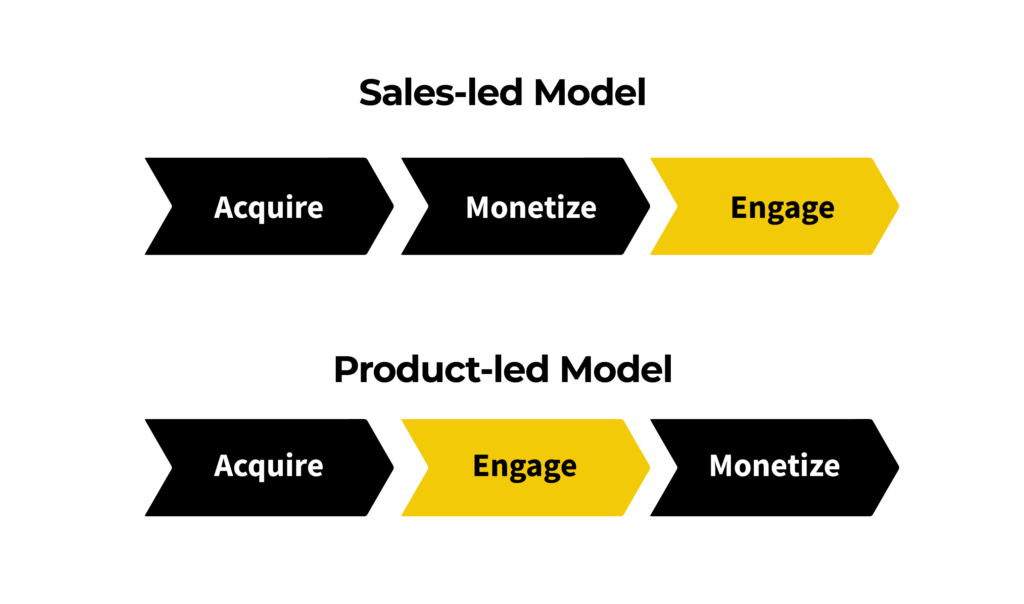
If your users don’t get value quickly from your product experience, it’s game over. There won’t be a second chance.
Our “unique” capability
This one is truly unique to your business – what one thing can your business do better than anyone else? If someone copied what you do and how you do it, why would they choose to pick you?
The first time you go through this, I encourage you to apply it to your current capabilities.
Here’s an old example from us at ProductLed:
- Our “what we do” capability: Live cohorts on product-led growth.
- Our “how we do it” capability: Engaging live sessions led by experienced PLG operators.
- Our “unique” capability: Focused on implementing PLG.
And then apply it to what future capabilities you need to win.
Here are our future capabilities at ProductLed:
- Our “what we do” capability: Coaching to help founders scale self-serve revenue.
- Our “how we do it” capability: Following a system that consistently improves every time a founder goes through the process.
- Our “unique” capability: Results in 30 days.
Now that you know your company's capabilities, it’s time to identify yours.
Action items:
- Identify your top three current capabilities as a business.
- Identify your top three capabilities that will help you win.
- Review the differences between the two.
Once you’ve completed this activity, you might conclude that you need to start developing a completely new capability, or maybe you need to deprioritize an existing capability.
Deciding your capabilities is fun, yet developing your capabilities can be painful as you may decide to shrink some teams that support old capabilities as you reallocate resources to fully support capabilities that will help you win as a business.
Yet, you'll risk being mediocre if you don’t develop these capabilities.
The whole point of developing capabilities is choosing a few things to become exceptional at and then deprioritizing or outsourcing the things you need to be okay at.
Now that you know which capabilities to develop, let’s dig into the strategic choices we must make.
4. What strategic choices must we make?
At the core of building a winning strategy is the simple reality that you must choose to do some things, not others.
Every choice you make that doesn't align with your strategy results in losing your edge.
A winning strategy is sharp and definitive and can win against any business it goes up against.
It’s the equivalent of bringing a gun to a knife fight.
It should feel unfair to your competitors.
Yet, the key to developing your winning strategy lies in making strategic choices.
What you don’t pursue is just as important as what you do pursue.
Without making key choices to follow through on your strategy, you won’t make meaningful progress.
For example, your where-to-play strategy might be to focus on targeting entrepreneurs, but if your marketing, content, and products are geared toward sales managers, you won’t develop an edge in your strategy. You’ll just design another mediocre business with vanilla copy and products because you tried to be everything to everyone.
Sound harsh?
Better coming from me than your customer.
To develop an edge to your strategy, let’s address four key areas you need to make some strategic choices around:
Vision and Mission
With your new vision and mission, does anything need to change? I’m not just talking about updating the copy on your About page and sharing a memo with the rest of your team. I’m talking about making strategic choices around anything you’re currently pursuing that isn’t in alignment with your vision and mission. This could be products that don’t quite fit into the new vision. A culture that doesn’t quite gel with where you want to go.
List out all the things that don’t quite gel with your new vision.
Then start taking a look at your where-to-play strategy.
Where to play?
The company that is everything to everybody is also nothing to nobody.
Each additional customer you target outside your where-to-play strategy distracts your team. For example, I was helping a leadership team develop their where-to-play strategy, and we decided to focus on small and medium-sized businesses as the target. Yet, the CEO would sign on big enterprise customers because they paid the big bucks. When I talked with the team, they told me those enterprise customers generated 95% of the support issues and took up 50% of development time because those contracts were custom. Without knowing it, the CEO was sabotaging the company and preventing it from focusing. As a result of this, they lost their edge as a company because they tried to take on too much.
When it comes to your where-to-play strategy, what strategic choices do you need to make around:
- Who your ideal customer is?
- What the main problem is that you help solve?
- What your core product is?
- What are the main marketing channels you’re going to prioritize?
- What geography you’re going to prioritize?
For many companies that go through this process, this might look like making strategic choices around doubling down on your best customer, prioritizing one or two marketing channels, and/or deciding to pursue a certain geography.
Once you’ve listed out the strategic choices you need to make to deploy your where-to-play strategy, let’s unpack some of the choices you need to make regarding how you’re going to win.
Your How-To-Win Strategy
Each moat has different strategic choices that are required.
I’ll walk you through each moat so you can get an idea of what choices you need to make depending on which moats you choose.
Differentiation Moat: Strategic choices could involve doubling down on a particular customer, focusing more on building out a specific feature, or hiring top talent in a critical area that supports the differentiation (i.e., an AI expert).
Cost Leadership Moat: Strategic choices could involve hiring a CFO, right-sizing the business, selling off non-core business lines, or reducing prices.
User and Customer Experience Moat: Strategic choices could involve sunsetting unused features, hiring a great user experience specialist, or creating systems to optimize the user experience each week.
Network Effects Moat: Strategic choices could involve giving more features away for free that get your product in front of more potential customers, incentivizing users to create templates, or creating a platform for other companies or individuals to participate in helping your customers win.
Operational Efficiency Moat: Strategic choices could involve hiring a senior COO to streamline your business, cutting out non-essential elements to deliver your product’s value, or creating an objective to reduce churn.
Branding and Reputation Moat: Strategic choices could involve surveying customers to find out how much you help them grow, creating a customer event, or identifying one or two ways to go above and beyond for each customer.
Distribution Moat: Strategic choices could involve doubling down on one specific platform (i.e., Shopify marketplace), lining up strategic partnerships, or hiring a marketing leader who’s exceptional at the channel you want to focus on.
Speed and Innovation Moat: Strategic choices could involve simplifying your roadmap process, setting goals around how much is shipped each day, or increasing your investment in research and development.
Pricing Moat: Strategic choices could involve moving to a usage-based pricing model, monetizing your users in alternative ways (like sponsorships, selling data, etc.), or simply raising prices.
Free Moat: Strategic choices could involve deciding to roll out a freemium model, creating a new product to give away for free, or giving more away in your existing free plan.
Switching Cost Moat: Strategic choices could involve rolling out more integrations so that your tool is more deeply embedded in a company’s workflow, increasing adoption across the rest of the company by solving more use cases, or making it easier to create data in a tool so that exporting the data is seen as overwhelming (i.e., exporting everything you’ve written in Evernote or Notion).
Proprietary Process or IP Moat: Strategic choices could involve filing multiple trademarks and patents around your process, giving part of your process away for free so users can understand it and get value from it. Or deciding to license your process to others.
Community and User Engagement Moat: Strategic choices could include setting up a new community, hiring a talented community leader to ramp up your community, or hosting consistent weekly events to spark engagement.
Expansion Moat: Strategic choices could include launching a new complimentary product, hiring an incredible customer success leader, or creating a process to grow customer value consistently.
Clearly, there are a lot of potential strategic choices to make depending on your how-to-win strategy.
What’s important is that you hone in on what those key strategic choices are.
Less is more.
Now that you’ve identified some of the key strategic choices you will make for your how-to-win strategy let’s discuss what needs to change to develop your capabilities.
Your Capabilities
Your capabilities support how you will win as a business.
You can easily spot the difference between a business that has world-class vs mediocre capabilities.
A mediocre business typically tries to do everything, while a world-class business focuses on doing only a few things but at a high level.
In the last chapter, you’ve defined your three core capabilities:
- Your “what we do” capability
- Your “how we do it” capability
- Your “unique” capability
I’d recommend focusing on making strategic choices around your capabilities in this same order.
Here are some questions to go through for each core capability:
- Do you need to hire someone who’s world-class at this capability?
- Do you need to develop someone on the team to level up in this area?
- Do you need to fire someone who’s not great at the capability you need to double down on?
- Should you allocate more resources to the team that is responsible for developing your core company capabilities?
- Should you reduce resources to the teams that are responsible for non-core capabilities?
- Are there any teams and/or individuals that could be eliminated that bring capabilities to the table that are no longer needed?
Now, the hard question is, what are the strategic choices you will make based on the answers to these questions?
This is where the rubber meets the road.
If you hold onto lots of non-core capabilities, you’ll run the risk of owning a mediocre business.
To build a world-class business, you need to cut the fat.
When people are involved, this isn’t easy, but this is the one thing that separates the good from the great.
Those same people you’re contemplating letting go could most likely get a better job that values the capabilities they bring to the table.
In fact, you could be holding them back by holding onto them.
All because you want to be nice.
I would know because I used to be Mr. Nice Guy, and although I delayed letting some people go for a long time, it held the business and the rest of the team back.
Resist the temptation to delay these strategic choices.
Every strategic choice you delay means your strategy loses its edge.
Let’s recap with action items.
Action items:
- List out the strategic choices to reinforce your vision and mission.
- Lean into your where-to-play strategy.
- Hone in your how-to-win strategy.
- Develop your core capabilities.
- Prioritize the strategic choices and assign an owner to carry them out.
Putting it all together
By now, you’ve built out your winning business strategy or at least know how to build out your strategy.
The next step is to put it all together so that you can easily reference your strategy and communicate it to the rest of the organization.
Strategy is formulated at all levels of the organization, and to be successful, it needs to be clearly communicated at all levels as well.
Roger Martin
The purpose of communicating your strategy is to create a shared understanding of the strategy, explain how and why we arrived at it, and discuss implications for the organization.
You should share your strategy with everyone who:
- Has to act on it.
- Will be affected by the changes implicit in the strategy.
- Has insights into possible challenges and could offer valuable feedback.
The key message you want to convey when communicating your strategy is:
- A high-level overview of the process you used to arrive at the strategy.
- The heart of your strategy – where we will play and how we will win.
- How our business will change when the new strategy is in place.
- How we measure the success of the strategy.
- The next steps in making the new strategy work.
With your strategy defined, it's crucial to share it throughout the organization. Once you’ve communicated your strategy with your team, make sure you review it frequently.
You can do this by:
- Review your strategy every week in a leadership meeting.
- Re-evaluating your strategy on a monthly, quarterly, or annual basis – depends on how much your business is changing.
- Leaning into your strategy in your marketing messaging. If you have a solid strategy, your marketing messaging should remind customers and your team what your strategy is.
To recap, strategy is about making choices.
To win, a company must choose to do some things and not others.
By going through this activity, I hope I’ve challenged you to create a winning business strategy.
If you're finding it tough to nail your product-led strategy and need clearer direction for your SaaS company, you might benefit from expert guidance.
In the ProductLed Implementation Program, we help you and your team focus on the essentials: understanding your market, defining a winning strategy, building key capabilities, and making smart strategic choices.
The implementation program uses a nine-component framework, with building a winning strategy being the first step. This proven approach helps you scale efficiently and profitably.
Learn more about working with a ProductLed Implementer here.


